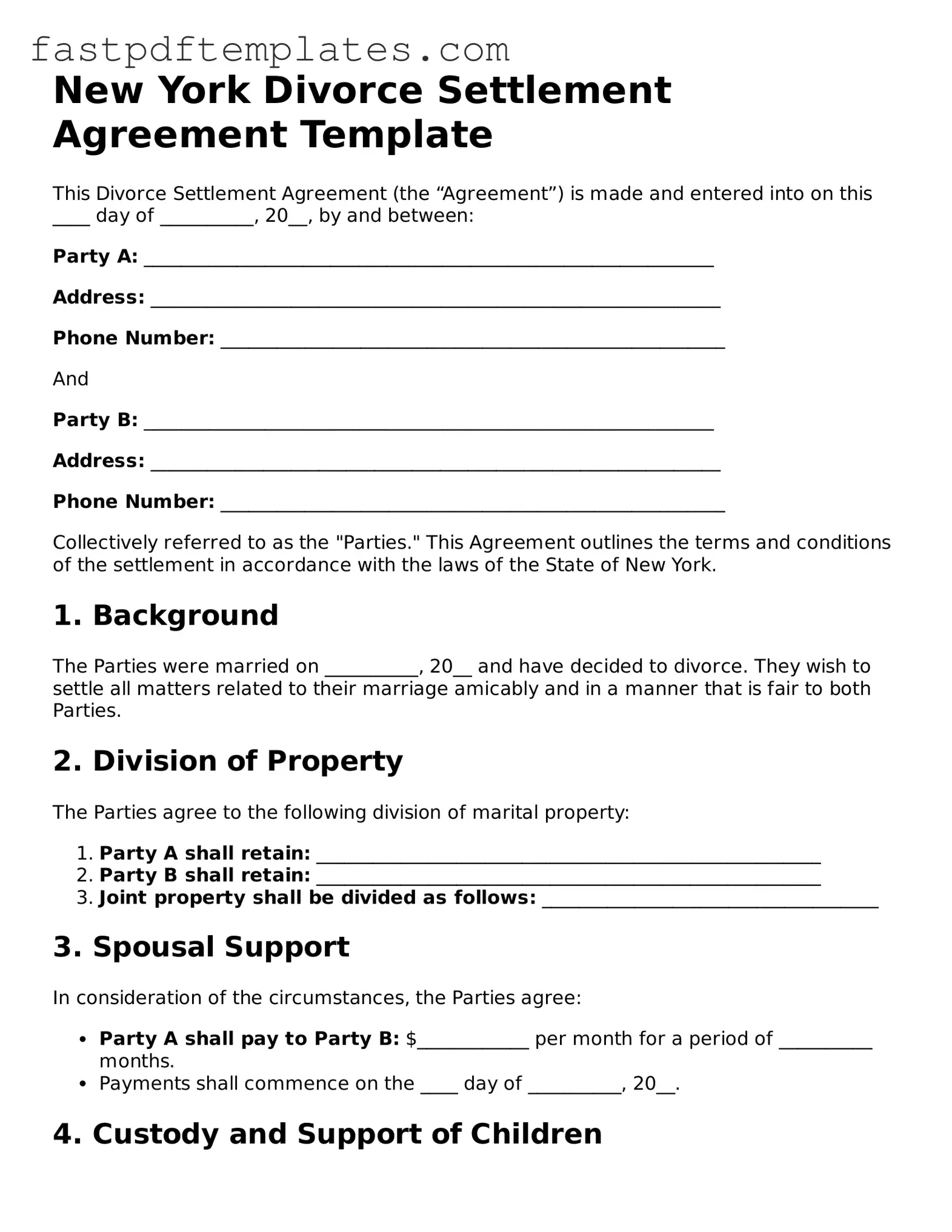New York Divorce Settlement Agreement Template
This Divorce Settlement Agreement (the “Agreement”) is made and entered into on this ____ day of __________, 20__, by and between:
Party A: _____________________________________________________________
Address: _____________________________________________________________
Phone Number: ______________________________________________________
And
Party B: _____________________________________________________________
Address: _____________________________________________________________
Phone Number: ______________________________________________________
Collectively referred to as the "Parties." This Agreement outlines the terms and conditions of the settlement in accordance with the laws of the State of New York.
1. Background
The Parties were married on __________, 20__ and have decided to divorce. They wish to settle all matters related to their marriage amicably and in a manner that is fair to both Parties.
2. Division of Property
The Parties agree to the following division of marital property:
- Party A shall retain: ______________________________________________________
- Party B shall retain: ______________________________________________________
- Joint property shall be divided as follows: ____________________________________
3. Spousal Support
In consideration of the circumstances, the Parties agree:
- Party A shall pay to Party B: $____________ per month for a period of __________ months.
- Payments shall commence on the ____ day of __________, 20__.
4. Custody and Support of Children
For any children born of this marriage, the Parties agree:
- Custody Arrangement: __________________________________________________
- Child Support Amount: $____________ per month, commencing on the ____ day of __________, 20__.
5. Other Provisions
The Parties mutually agree to the following additional terms:
- __________________________________________________________________________________
- __________________________________________________________________________________
6. Governing Law
This Agreement shall be governed by and construed in accordance with the laws of the State of New York.
7. Entire Agreement
This Agreement represents the entire understanding between the Parties and supersedes any prior agreements or understandings, whether oral or written.
IN WITNESS WHEREOF
The Parties hereto have executed this Agreement as of the day and year first above written.
_____________________________ (Party A Signature) Date: _______________
_____________________________ (Party B Signature) Date: _______________
